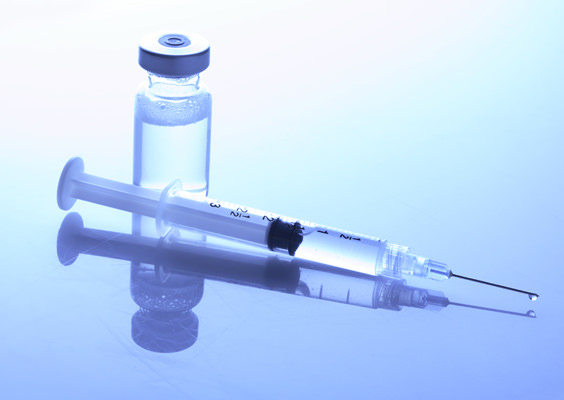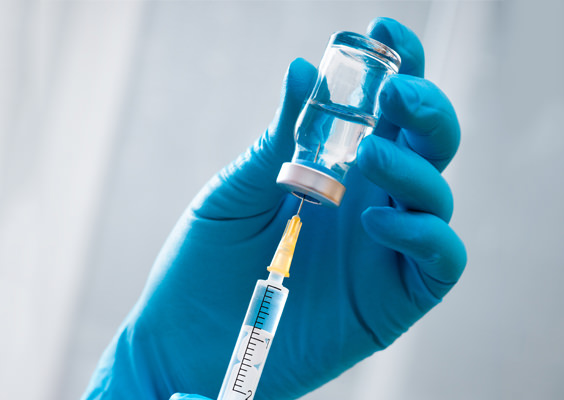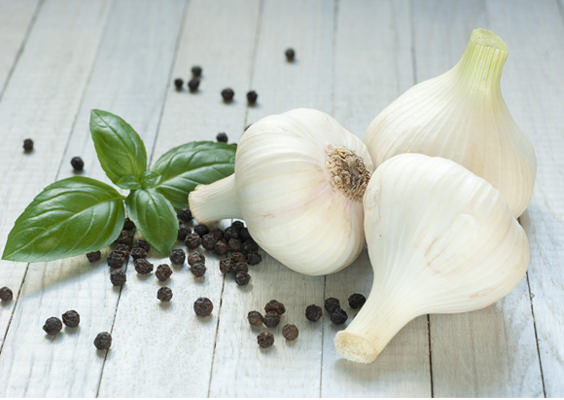Welcome to the flu season. You’re smack in the middle of it. You’ve probably seen the signs offering free flu shots outside your local pharmacies.
Between October and May each year, the myth about the effectiveness of the flu vaccine is hyped to a fevered pitch (pardon the pun).

I’ve never had a flu shot in my life.
Unlike many alternative health doctors, I’m not against vaccines as a rule. Vaccines have knocked out many of the ancient scourges — like bubonic plague, small pox and polio. But flu shots are different.
First of all, I don’t believe the flu vaccine is effective — given the risk you must take. And I’ve seen many patients over the years who were vaccinated against the flu, and they still got sick.

More importantly, flu shots also inject toxins into your body that can result in serious health problems down the road.
In today’s article, I’m going to show you how you can build up your own immune system, so your body can fight unwanted bacterial and viral infections all by itself — without a vaccine.
But first, let’s take a look at the real effectiveness of flu shots — and exactly what the risks are.
Most doctors won’t tell you about the risks and they exaggerate the flu shot’s effectiveness.
p>The 2014-2015 flu season was one of the worst in years… and the vaccine, which widely pushed by public health organizations as the best way to prevent getting sick, was a big failure.
Data from the U.S. Centers for Disease Control and Prevention revealed the injectable flu vaccine prevented only around 18% of cases last year.

That means 82% of everyone who was given the injectable vaccine thought they were protected from influenza, but they got the bug anyway. And the inhaled
live-virus nasal spray vaccine performed even worse, with potentially zero benefit for young children.One of the problems is that flu vaccines are prepared a year in advance. So the manufacturers can only guess which strain of flu will be the biggest threat each season. And if their guess is wrong, the vaccine is useless.
You see, even when flu strains mutate — as they often do — health officials continue to recommend vaccine as the only way to protect yourself, especially for children and the elderly.
Even on a good year, when they do manage to match the vaccine with the circulating strain, the success rate is only around 60%.
So you’re right to be cautious about a vaccine with this kind of record.
But it’s not just the effectiveness o
Toxins present in the typical flu vaccine include:
- Thimerosal: Found in multi-dose flu vaccines. This contains 49.6% mercury by weight. Mercury is linked to decreased brain function, organ failure and muscle weakness.
- Triton X-100: Another mercury-based substance. While not itself a xenoestrogen, Triton X-100 can behave just as an estrogen mimicker in your body.
- Polysorbate 80: This compound carries the risk of serious side effects, including blood clots, stroke, heart attack, heart failure, anaphylactic shock, and death in some cases.
- Formaldehyde: Classified as a human carcinogen by the Environmental Protection Agency (EPA).
In a survey of nearly 1,800 studies, flu shots were linked with numerous dangerous reactions —affecting skin, joints, intestines, kidneys and shoulder muscles.
But this isn’t the only side effect. It can cause everything from headache, vomiting, fever and muscle aches to encephalitis, Guillain-Barré Syndrome and neurological disorders.
The best way to avoid the flu — and the potential dangers of the vaccine — is to keep your body’s immune system in tip-top shape. A healthy immune system is the key to preventing infectious diseases.
Here are some smart ways to build your immune system:
- Take vitamin D. Your T-cells — the body’s foot-soldiers that fight infection — can’t organize themselves to fight if there’s no vitamin D available. I recommend 20 minutes of direct sun daily, and eat foods like eggs, Swiss cheese, beef liver, tuna, sardines and cod liver oil. You can also supplement with vitamin D3 — at least 2,000 IU daily. 8,000 IU is optimal.
- Take vitamin C. This vitamin has been marginalized as ineffective. But more than 18,000 studies show its benefits just in the PubMed database alone. Vitamin C raises your number of infection-fighting white blood cells and antibodies. Vitamin C foods that boost your immune system best are guava, papaya, strawberries, kiwi, cantaloupe, orange, and grapefruit — but you’ll need six servings of fruit a day. I recommend a supplement of 2,000 mg daily. Take vitamin C in divided doses throughout the day for best results. Take up to 5,000 mg to 6,000 mg a day if you feel like you’re getting sick.
- Sleep well. Your immune system needs sleep. When you’re deprived of sleep, your immune system suffers and your body becomes vulnerable to illnesses and infections.
- Cut your stress. Stress produces a hormone called cortisol. A little cortisol can help. But a steady stream of it is toxic to your immune system. You should banish stress for at least 10 minutes every day. Meditation, yoga and exercise are great stress busters.
- Exercise with PACE. Studies show that vigorous exercise four to six times a week boosts
your immune system. My PACE program is a great way to do it. Recent studies prove vigorous exercise can increase the number of your adult stem cells.




And my favorite immune system boosting herbs are:

- Garlic: This antibacterial agent is one of nature’s top germ killers and can help fight infection.
- Cat’s claw: This stimulates T-cells to boost the immune system. You can find it in health food stores. Look for a supplement made from the inner bark and take 500 mg per day.
- Anamu: This Amazon-native herb protects against bacteria and viruses. In one study, anamu increased natural killer cells by 100%. These are the cells that kill disease throughout your body. You can buy the dried leaves online or in health food stores to make a tea. You can also take the herb as a capsule. I recommend 500 mg to 1,000 mg per day in divided doses. I discovered this herb when I was in Peru and use it regularly. And I never travel without it.
To Your Good Health,

Al Sears, MD, CNS
1Dr. Oz Show: Thimerosal in Flu Shots – What He Got Wrong & What You NEED to Know! VaxTruthorg. 2014.
2Cheryl S. Watson and,a Guangzhen Hu, et al. “Rapid Actions of Xenoestrogens Disrupt Normal Estrogenic Signaling.” Steroids. 2014 Mar; 81: 36–42. PMC 2015 Mar 1.
3Coors EA, Seybold H, Merk HF, Mahler V. Allergy Asthma Immunol. Polysorbate 80 in medical products and nonimmunologic anaphylactoid reactions. 2005 Dec;95(6):593-9.
4Facts About Formaldehyde. EPA. September 2015.
5Felicetti, P., Trotta, F., Bonetto, C., et al. “Spontaneous reports of vasculitis as an adverse event following immunization: A descriptive analysis across three international databases.” Uppsala Monitoring Centre (the UMC), VigiBase®, an affiliate of World Health Organization (WHO).
6Kongsbak, Martin, et al, “Vitamin D controls T cell antigen receptor signaling and activation of human T cells,” Nature Immunology 2010; 11: 344-349
7F. Macaluso, K. H. Myburgh. “Current evidence that exercise can increase the number of adult stem cells.” Journal of Muscle Research and Cell Motility August 2012, Volume 33, Issue 3-4, pp 187-198
8Jovicevic L. “In vitro antiproliferative activity of Petiveria alliacea L., on several tumor cell lines.” Pharmacol Res 1993;27(1):105-106.

